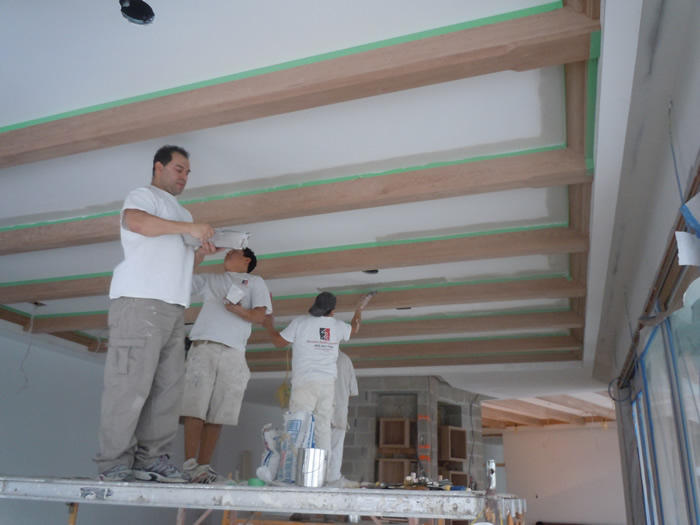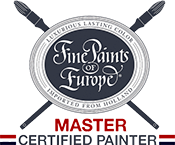What the Professionals Consider When Painting Over Drywall
August 24, 2020

Once your drywall is installed, it is time to add paint. What do the pros do to ensure those last coats go on as well as smoothly and as efficiently as possible? Here are a few things they tend to keep in mind.
Prepping the Drywall
Before applying any paint, the drywall must be prepped, including repairing and cleaning it.
1. Repair the Drywall Where Needed
When it comes to painting over drywall, repairs are critical. Any dips and cracks in the drywall will continue to show through after painting over them, so creating a smooth surface will offer a much better finish.
Professional painters will apply spackling or drywall joint compound to any gaps or gouges with a putty knife. Once dry, they sand down the area with a special drywall sanding sheet.
2. Clean the Drywall Surface
Professionals also have to think about cleaning drywall before painting or priming it. New drywall can be particularly dusty, and repaired drywall in places like kitchens or bathrooms can gather oil, moisture and grease. This grime can cause the paint to not adhere as well, and it may show through on the finished results, so it must be removed prior to applying any new paint.
3. Prime the Drywall
Adding primer is an essential step in the preparation process. Drywall primer uses a material called polyvinyl acetate (PVA), which helps to make the paint better adhere to the drywall surface. With primer, you can reduce the number of coats required and create a more even, finished result.
Sometimes, tinting the primer can also help reduce the number of coats you need since it makes it much closer to the final color. This won’t always work for dark colors, though, and a gray primer tint often works better due to the way the colors interact.
Painting the Drywall
Painting over drywall is a little more straightforward. While there are many different types of paint that professionals will choose to work with, the overall process is similar.
First, they must apply painter’s tape to any edges and put down drop cloths to protect the surfaces in the room. An alternative to using tape is to “cut in” on the edges while painting — a technique that allows skilled painters to achieve clean lines.
The next step is to apply the paint. Professional painters may use rollers or sprayers. Both get the job done. Spraying is faster and offers even results, but it requires quite a lot of preparation. Rolling can take a bit longer, but it is a simpler application. For rollers, the painters move in a large M or W pattern and spread paint vertically across, making sure to paint over any edges while they’re still wet.
After the paint dries for a few hours, painters can apply a second coat.
Working With the Experts at Shoreline
Here at Shoreline Painting, our pros know everything there is to know about drywall and covering it up. We’ve been serving homeowners and commercial clients throughout Fairfield County and Westchester County for over 35 years.
Contact us today for a free quote and let us help you with your painting needs.
Recent Posts











